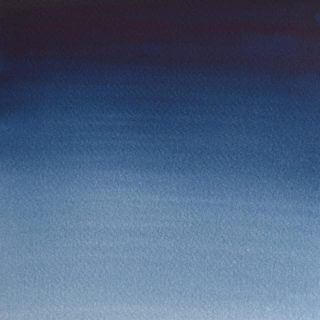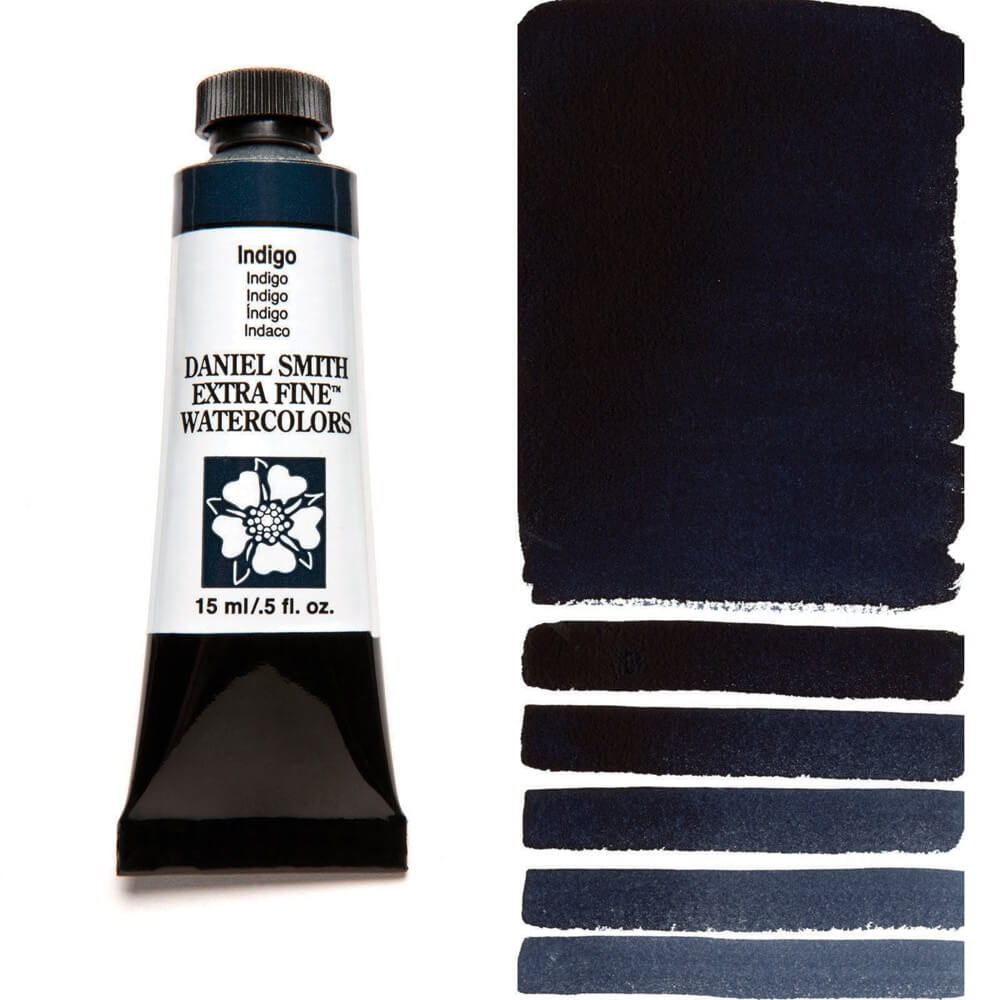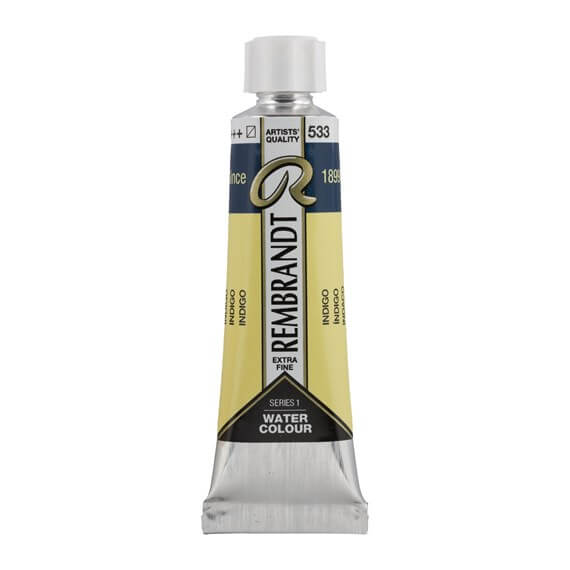For artists, the choice of color is essential in creating a unique and compelling work of art. Every color has its unique characteristics that can evoke different emotions and moods. Indigo has found its place in the artist’s palette is versatile and vibrant. In this article, we will explore this color’s use and significance in the art world, providing insights into why it continues to be a popular choice among artists.
Indigo by different brands
Find 4 manufacturer(s) of watercolors below. We’ve also compiled a list of our favorite art supplies here.
Indigo – Winsor & Newton

Indigo is a deep blue pigment that can range from dark black to pale blue. Originally extracted from plants similar to blue woad used by the ancient Britons, it was synthesised in 1878 in Germany. It is one of the oldest blue pigments used universally.
| Color No.: 322 | Lightfastness:II – Very Good | Opacity:Opaque |
| Staining: | Granulation:Non-Granulating | Sizes: 5ml tubes; 14ml tubes; Half Pans |
Indigo – Daniel Smith

Our DANIEL SMITH Indigo formula mixes Indanthrone Blue with Lamp Black for an extremely lightfast, intense dark that closely matches true Indigo. Transparent, yet high in tinting strength, this Indigo leaves a gentle faded blue denim stain when blotted from a damp state paint. Blueberries, blackberries and plums are a few subjects to play with using this technique. Use Indigo wherever dusty purples are desired. Indigo evokes a feeling of atmospheric depth used for expressive, moody skies. Try flowing short strokes of Indigo into water, add touches of Sepia and Quinacridone Burnt Orange to create branches and birch trees. Historically Indigo, used since the early Egyption times, has been a very important blue dye in fabrics as well as art materials, though not lightfast like DANIEL SMITH’s Indigo Watercolor. Natural Indigo is a deep blue colorant named anil. It is obtained from the sprigs of the indigofera plant. In the late 1600’s, the major source of indigo was the French West Indies, where large crops of indigofera was grown and harvested just before the plant bloomed. Once picked, the plant was processed in vats where it was water filtered, then dried into cakes for export.
| Color No.: | Lightfastness:I – Excellent | Opacity:Transparent |
| Staining:3-Medium Staining | Granulation:Non-Granulating | Sizes: 5ml tubes; 15ml tubes; Half Pans |
Indigo – Rembrandt

| Color No.: 533 | Lightfastness: | Opacity:Semi-transparent |
| Staining: | Granulation: | Sizes: Tube 10 ml |
Indigo – Van Gogh

| Color No.: 533 | Lightfastness: | Opacity:Transparent |
| Staining: | Granulation: | Sizes: Tube 10 ml |
Tips when choosing colors
When it comes to choosing colors for watercolor painting, there are a few tips to keep in mind. First, consider the color wheel and how different colors interact with each other. Understanding complementary colors, warm and cool tones, and color harmonies can help you create dynamic and visually appealing artworks. Additionally, think about the subject matter and the mood you want to convey. For example, if you are painting a landscape, you may want to choose greens and blues for a calming and natural feel. Lastly, experiment with different brands and pigments to find colors that suit your style and technique. Remember, the color choices you make can greatly impact the overall look and feel of your artwork, so take your time and choose wisely.
Also read, watercolor essentials to see which colors are essential
History of Indigo
Indigo is a dark blue color that has been used for centuries in textile dyeing and painting. The color gets its name from the plant Indigofera tinctoria, which was originally used to extract the dye. In watercolor painting, indigo is a popular color due to its deep, rich blue hue and excellent lightfastness. It is often used to create shadows and depth in paintings, as well as for creating atmospheric effects in landscapes and seascapes.
Indigo was first introduced as a watercolor pigment in the late 18th century, and it quickly became popular among artists. Its deep blue color was highly sought after, as it was difficult to achieve with other pigments available at the time. In fact, it was so popular that it was used extensively by J.M.W. Turner, who used it to create the rich, luminous blues in many of his paintings. Today, indigo is still widely used by watercolor artists, and it remains a staple color in many palettes.
Fun fact: Indigo was once considered a luxury color, as it was difficult and expensive to produce. In fact, it was so valuable that it was once used as a form of currency in some parts of the world.
How watercolor paint is made
Watercolor paint is typically made from a few simple ingredients:
- pigments
- binders
- water

The pigments used in watercolor paints can be organic or inorganic compounds, such as minerals or synthetic chemicals. These pigments are finely ground and then mixed with a binder, which helps the pigment particles adhere to the paper when the paint is applied.
The most common binder used in watercolor paints is gum arabic, a natural resin extracted from the sap of the acacia tree. Gum arabic is mixed with the pigment to create a thick paste, which is then combined with water to create the final paint.
Other additives may be added to the paint to improve its performance or create specific effects. For example, some watercolor paints may include wetting agents to help the paint spread more evenly on the paper, or preservatives to extend the paint’s shelf life.

Watercolor paints are available in a wide range of colors and textures, from transparent washes to opaque and granulated pigments. Different
manufacturers may use slightly different formulations or ingredients in their paints, which can affect the quality and performance of the paint.
If you’re interested in learning about other colors, check out our pages on Payne’s Gray, Neutral Tint, and Ivory Black, which provide in-depth information on these colors and their various shades.
